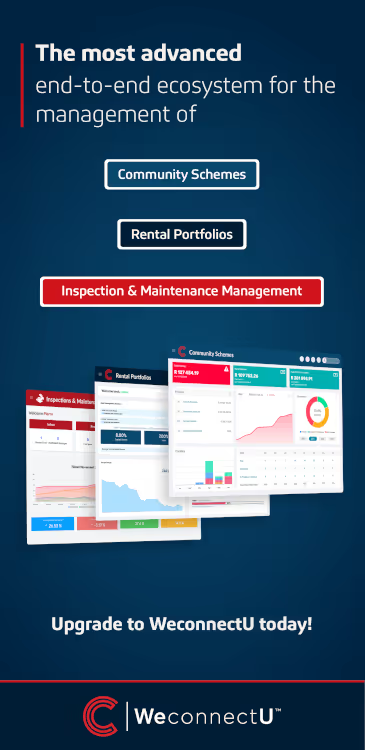Perfect Storm: Why South Africa’s property market is the best in a decade for buyers
- Falling interest rates, flat prices, and fierce bank competition are reshaping SA’s property landscape.
- Buyers now hold the power, with financing at multi-year lows and sellers adjusting to reality.
- The Western Cape remains an outlier, but opportunities in Gauteng and KZN have never looked stronger.
A Market decades in the making
Eva August, CEO of Century 21 South Africa, has seen every phase of the property cycle from euphoric booms to sobering corrections. But what she’s witnessing today feels unlike any other market she’s encountered.
“We’re in a once-in-a-decade alignment,” says August. “Interest rates are falling, banks are competing harder than ever, and prices in many areas have finally stabilised. It’s the most powerful buying environment I’ve seen in years but it won’t last forever.”
Running the Numbers
The South African Reserve Bank’s five consecutive rate cuts since September 2024 have pushed the prime lending rate down to 10.5%, saving real money for homeowners.
For a R550,000 bond, each 0.25% rate cut translates to around R83 less per month. With cumulative cuts totalling 1.25%, that’s R332 monthly or nearly R4,000 a year in savings effectively a month’s free bond repayment every year.
Economists forecast that rates could drop even further before stabilising, while inflation remains anchored near 3% a historically rare combination.
The supply demand reset
Despite cranes dotting skylines, the housing market’s reality depends on the segment.
“While sectional-title stock has surged in metros, free-standing homes remain undersupplied in many suburbs,” August notes. “That’s created a pricing balance that favours buyers, you can shop around and negotiate from strength.”
Lightstone data shows 27% of South Africans now buy in a different province than they sell, up from 16% in 2019. This wave of semigration continues to redefine supply and demand, with buyers chasing lifestyle, affordability, and work-from-anywhere flexibility.
The Western Cape conundrum
The Western Cape is both the success story and the frustration of South African real estate. Fourteen of the top fifteen towns seeing an influx of new owners are located there.
Yet, this popularity comes at a price. Lightstone’s mid-2025 data shows Cape Town prices up 8.5% year-on-year, against the national average of 5.2% and Johannesburg’s 2.3%.
“The Cape market runs on a different clock,” August explains. “Stock is tight, foreign money is active, and locals often find themselves priced out. But if you look north Gauteng, KwaZulu-Natal, even smaller metros, buyers are in a golden position.”
Indeed, Gauteng and KZN have stabilised after years of correction. The result: real buyer’s markets, realistic pricing, and motivated sellers.
Banks in a bidding war
The new competitive frontier isn’t the property itself, it’s the mortgage battlefield.
In Q2 2025, 59% of first-time buyers obtained homes without deposits, and 10.5% financed both purchase and transfer costs.
Banks are rolling out perks once unthinkable: fee coverage, cashback offers, and rate discounts. Nedbank, for instance, is offering up to R15,000 cashback and a 0.25% rate reduction for clients making them their primary bank.
“Buyers need to think like investors, pit the banks against each other,” advises August. “Never take the first offer. Work with bond originators who can negotiate across lenders. That’s where the real savings are.”
Smart moves for savvy buyers
1. Read the market, not the headlines.
Property prices have plateaued or softened outside premium nodes. That’s leverage in your favour, especially with patient, data-driven negotiation.
2. Don’t wait too long.
Rates may still ease, but inventory is tightening in good areas. “Perfect timing doesn’t exist,” says August. “Act when the numbers make sense, not when the media says it’s safe.”
3. Use competition to your advantage.
Apply across multiple banks. Get bond originators to secure side-by-side quotes. The variance in total loan cost can be tens of thousands of rand.
4. Think beyond Cape Town.
Johannesburg and Durban offer yields above 10%, far stronger than Cape Town’s sub-9% returns. “Follow value, not vanity,” August warns.
The Broader Picture
With inflation under control and SARB now targeting 3%, monetary policy has shifted from restrictive to stimulative. That means liquidity and opportunity. But cycles turn fast. As confidence rebuilds, prices will eventually follow.
“Buyers who act now are getting a double bonus discounted financing and pre-growth pricing,” says August. “In a year or two, people will look back and say: that was the moment.”
Final Word
The window is open, but not forever. Interest rates are at multi-year lows, banks are fighting for clients, and property pricing in most regions remains realistic.
For first-time buyers, this is the moment to step in. For investors, it’s the time to rebalance portfolios toward high-yield metros and growth corridors.
As August concludes:
“The question isn’t whether you can afford to buy in this market. It’s whether you can afford not to.”






.avif)

.avif)


.avif)

.avif)




.svg)


.avif)

.avif)







%20.avif)








.avif)
%20.avif)
